While Hermes ties are known for their vibrant colors and printed patterns, the Hermes belt is even a bolder statement because of the big “H” buckle. It is an instantly recognizable product with retail prices of $800 and more – it has become a very popular status symbol. But is it worth the price tag?
- A Brief History of Hermès
- A Closer Look At The Hermès “H” Belt: Price
- Configurations & Materials
- Hermès Belt Construction & Workmanship
- Belt Sizing
- Belt Manufacturing & Packaging
- Hermès vs. Other Belt Systems
- Are Hermès Belts Overpriced?
- How Do Hermès “H” Buckles Make You Look?
- A Word on Counterfeit Hermès Belts
- How Can You Spot A Fake Hermès Belt?
- Conclusion: Is The Hermès “H” Belt Worth It?
- Outfit Rundown
In the world of luxury brands, Hermès is certainly an iconic one, with prices to match. For men, they’re famous for their neckties, which can be seen on Wall Street bankers and Russian Oligarchs alike. In this installment of our ongoing review series Is It Worth It?, we examine the Hermes “H” belt and see if it’s worth your hard-earned money. If you Google the term Hermes belt, one of the first questions that will pop up is, “Are Hermes belts tacky?” So today, we’ll look at not only at the quality of materials and the workmanship, but also how it can be incorporated stylistically into an outfit–and we’ll discuss if it’s tacky or not. (By the way, it’s pronounced ehr-MEZ, not HER-mees, Her-MIS, or anything else.)
A Brief History of Hermès
Hermes was founded in 1837 by the German-born Thierry Hermes. At first, he was a maker of harnesses and bridles for the carriage trade. That also explains why Hermes has had a carriage in their logo since 1950. Over the years the company became well known for their saddles, with customers including Russian czars. In 1880, the family moved the Hermes shop to the world-famous 24 Rue u Faubourg Saint-Honoré in Paris. If you want to, you can visit the shop there today. You can even find zipper jackets just like the ones they first introduced in the 1900s. In fact, they made a golf jacket for Edward, the Prince of Wales at the time, and it was a complete novelty.
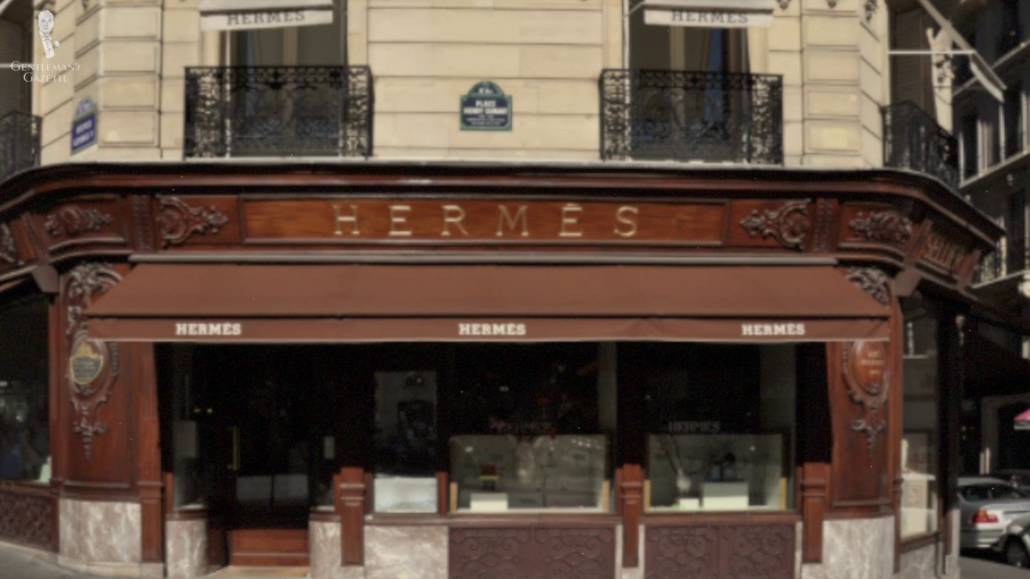
In the first half of the 20th century, Hermes had a great array of clothing, accessories, watches, handbags, (including the famous Kelly and Birkin bag styles) and fragrances. Despite those lineup extensions, by 1970, Hermes’ popularity was declining, and many attributed to the fact that they still heavily relied on natural materials. The decline continued slowly until 1978, when fifth-generation Jean-Louis Dumas took over as artistic director and chairman. Under his watch, the company focused heavily on leather goods, as well as silk products.
Ever since then, Hermes hasn’t just increased their sales, but also established their brand as the leader in luxury. Today, it’s considered to be the 33rd most valuable brand in the world. In 2019, about 30% of those sales came from leather goods; among them, the famous Hermes H belt. So is it worth it? Read on to find out.
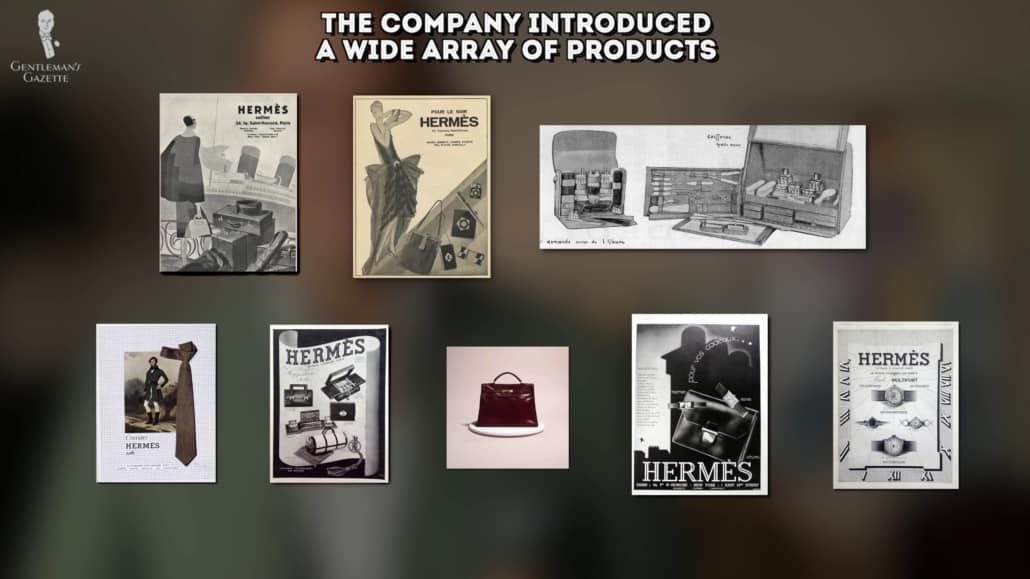
A Closer Look At The Hermès “H” Belt: Price
First of all, we have to look at the price. On their website, you have to spend $790 at a minimum to get the belt, but you can easily spend up to several thousand dollars depending on the leather that you’ll choose. Interestingly, you can only buy a buckle and a belt together, but when I purchased it online, the order confirmation broke out the buckles and the belts individually. The buckles are priced at $355; the belts (or “straps” as they call them) started at $425 and I got some others for $455.
Even though that might seem like a lot, compared to the genuine crocodile strap $4,900, these almost seem cheap! For this review, I bought three classic H belts in different leather color combinations, in the sizes 95, 100, and 105 (which stands for centimeters). If you want to get the size in inches, just divide these numbers by 2.54.
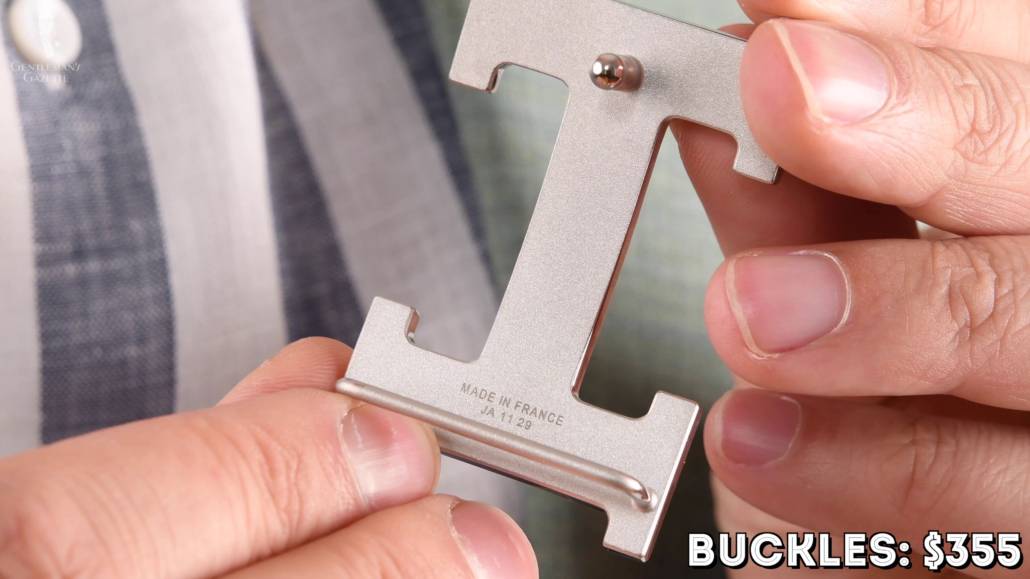
Size-wise, I suggest you measure around your waist; when I did that I came up with different measurements, because the body is flexible, and so I decided to get three sizes. I’m glad I did because the only belt that fit was the smallest one. If I hadn’t done that, I probably would’ve ended up with a 100-centimeter belt, which would’ve been too big. Of course, if you’re at the store you can figure out the right sizing right then and there.
One thing I really like about the Hermes product is that it’s a modular belt system. In other words, the buckles work with different belts (as long as you get the belts in one width). Here, I bought a belt in a 32mm width (about 1.25 inches), but they also have 38mm width (about 1.5 inches). On top of that, the belts are reversible, meaning with 3 buckles and 3 reversible belts, I should be able to get 18 different combinations. Unfortunately, one color is black twice, so that reduces it to about 15 different combinations. Still not bad!
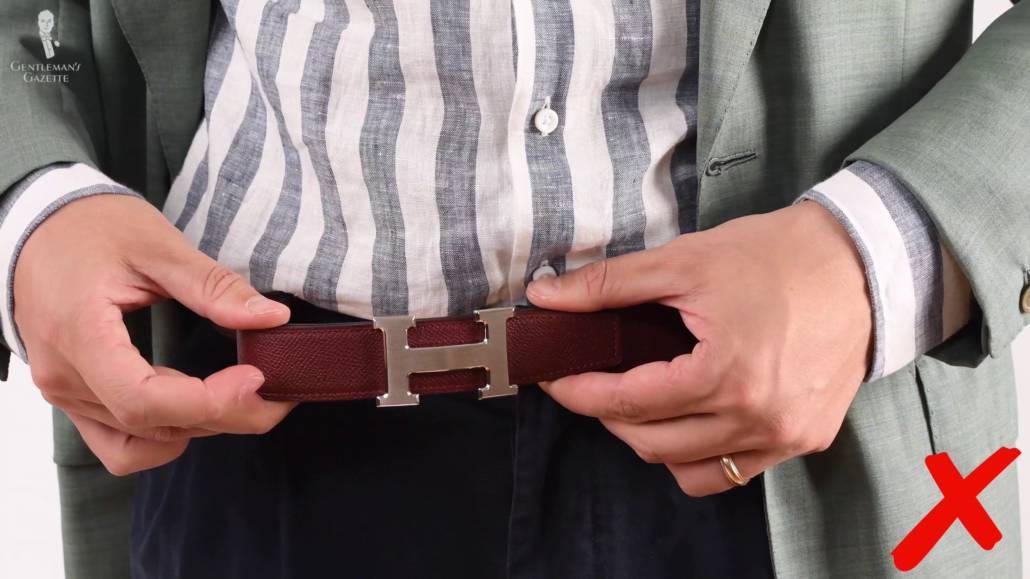
A Note on Modular Belt Systems
Even though the price of a modular belt system is generally higher, you’ll really get a lot more flexibility. If you think about the cost-per-buckle-and-belt-combination, it’s a lot less than regular belts. This is the primary reason why I designed the Fort Belvedere belt system to be modular, so you can mix different colored belts with different buckles and get the look you want; that’s particularly handy when you travel. So, rather than traveling with five to six different belts, you can maybe just bring 2 straps which are reversible and 2 buckles, and you should be all set.
Configurations & Materials
In terms of configurations, you have many possible options. There are lots of different belts, colors, and leather textures, and you’ll find all kinds of H buckles in colors such as gold and silver. Example buckle styles include the Constance buckle (which has a serif just on the outside) or the classic H buckle (which has a serif on the outside and inside of the vertical H strokes).
Buckle Metals
In terms of metal, Hermes doesn’t share a lot of information on their website; most listings say that the buckles are “permabrass.” To me, it looks like a brass buckle that is then gold-plated or platinum-plated which is exactly what we do at Fort Belvedere as well, because it’s a great combination of solid materials that will age well (depending on the thickness of the plating). That being said, I find it quite disappointing that a belt that sells for so much money doesn’t tell me what the materials are really made of beyond just “calf leather” or “crocodile leather.” For a product in this category, I’d really expect more information.
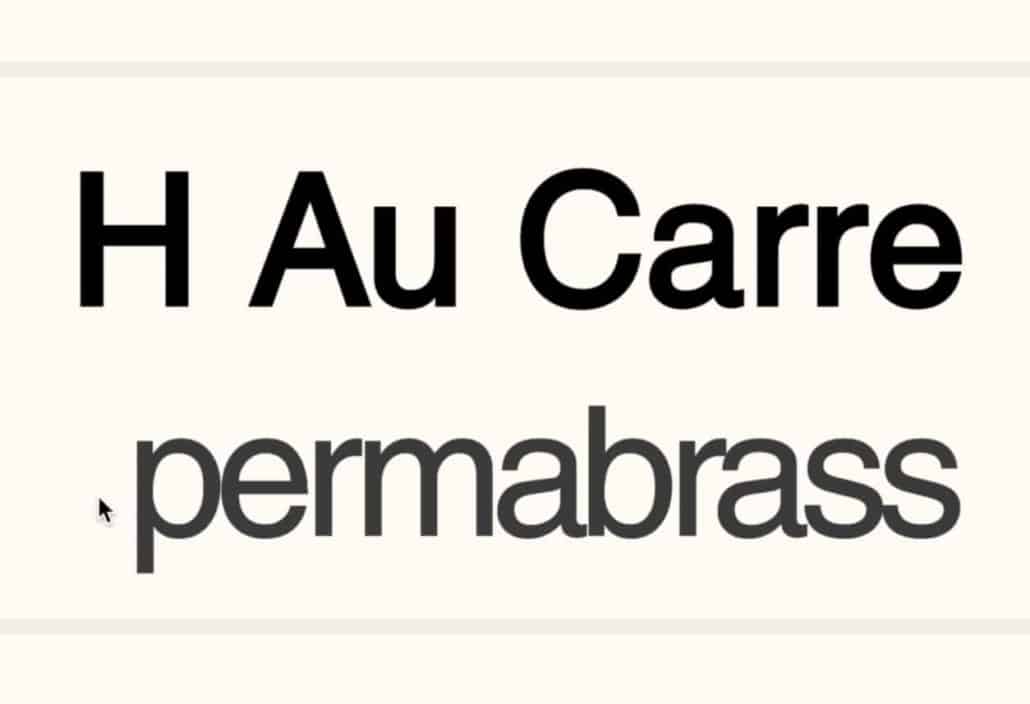
Even though you can’t find them on their website today, Hermes used to sell solid 18-karat or 750 gold buckles; you can still find them sometimes on places like 1stdibs, but expect to pay more than $20,000 for just a buckle without the belt. Not many people know about this, and I have a friend who years ago bought an Hermes H belt on eBay that was just advertised as a “silver buckle with a belt.” When it arrived it was actually the 750 18-karat white gold buckle, and he was able to sell it for several thousand dollars and made a good profit!
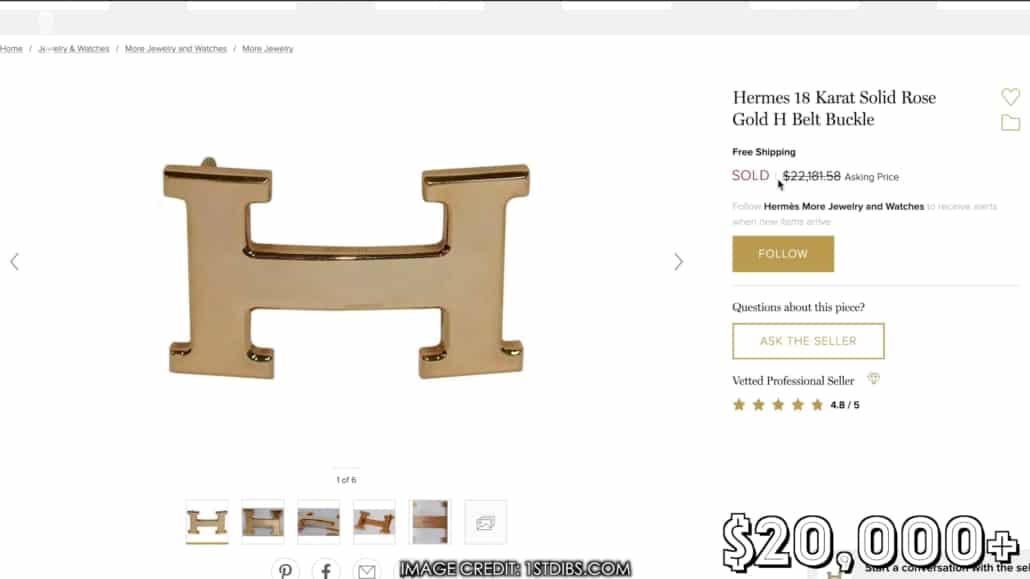
Leather
In terms of leather, Hermes typically uses differently textured leather and different colors on the front and the backside of the belt. In general, they appear to be chrome-tanned. All of the leathers I’ve seen from Hermes are of outstanding, top-notch quality. This includes the unique textures added to the belts, and it seems to me that the reason they do this is to make it much more difficult for people to fake the belt (because as an expensive status symbol, H belts from Hermes are frequently faked).
The leather has a firm touch, and it definitely appears to be pigmented and coated to get that exact texture that they want. In terms of softness, I would say it’s between a medium stiffness and soft. For belts, I typically prefer a slightly stiffer leather, because over time it will soften up automatically, and if it was too soft to begin with, it would just get out of shape rather quickly.
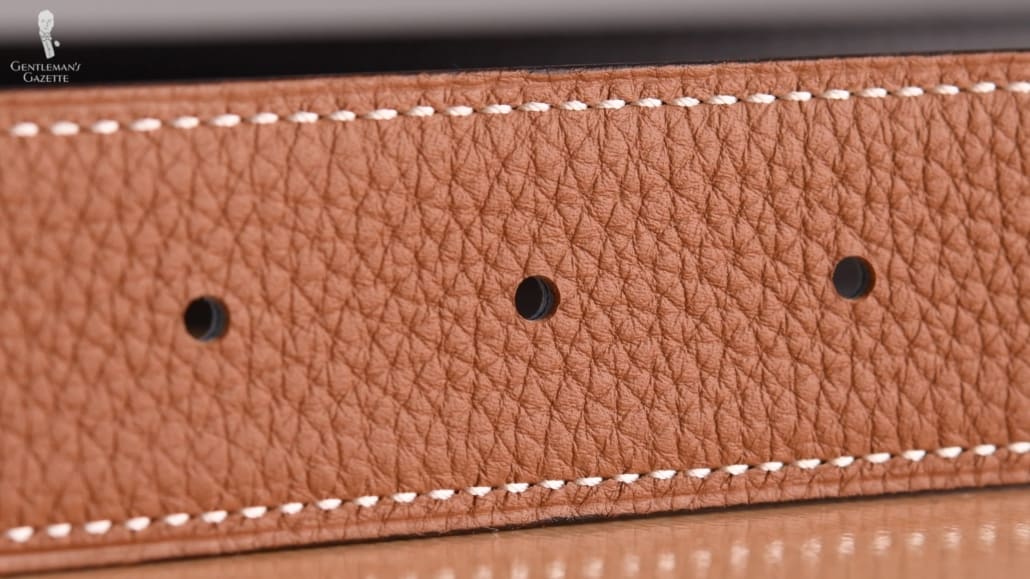
Closely examining a belt’s holes, you can see if the leather was semi-aniline or aniline-dyed. For example, the cognac brown leather is aniline-dyed all the way through. The black leather, on the other hand, has a white leather colored underside and a dark black coating on top. On their reddish and medium brown combination belt, both of them are aniline-dyed but then have a pigment coated top. The signature orange Hermes belt has leather that is aniline-dyed with a top coating of color, and the black leather is, again, white on the underside and just black on top.
While it seems that the belts are relatively thin and that they just consist of two layers of leather, looking through the holes, you can tell that there is a third lining leather in the middle. As their belts are reversible, having a texture is actually a good idea, because the leather on the inside will always be creased. If you have a pre-embossed pattern, it will crease along those lines and it won’t age as quickly.
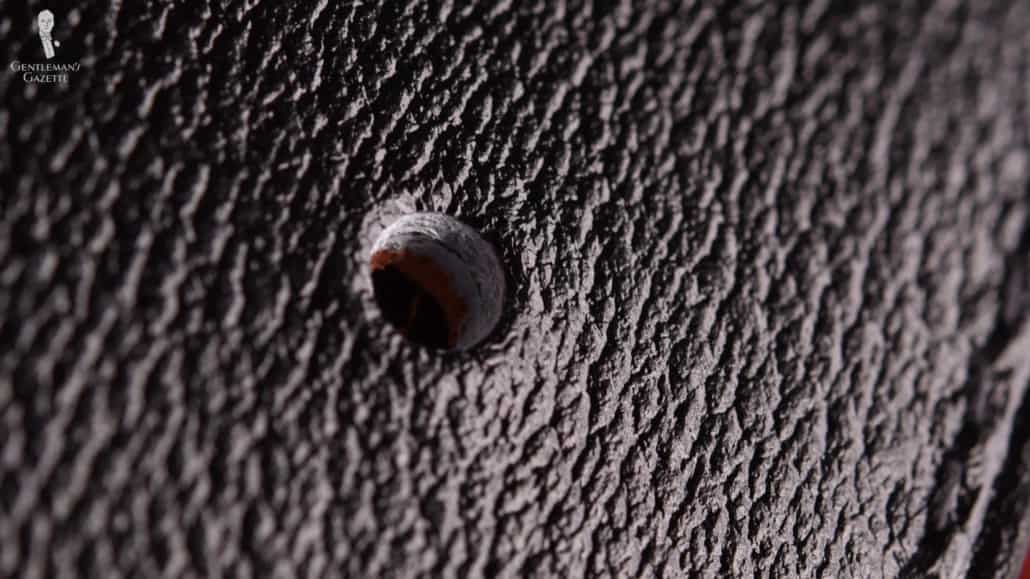
Hermès Belt Construction & Workmanship
In terms of construction, the Hermes belts are crafted with a high quality of detail and precision. For example, the stitch density is very consistent; it ends right in the corners and the distance to the edge is always the same. Unlike their watch straps, these belts are sewn by machine. If you Google for Hermes watch straps, you’ll find tons of videos showing you how they are sewn by hand. For the belts, they’re all machine-made, and not made by hand.
Traditionally, a hand-made belt would be welted by a saddle stitch (the same stitch used on the sole of a bespoke shoe), using one thread with needles at both ends. On the other hand, with a machine, you actually have two threads. While they’re technically not quite as stable, modern machine technology has advanced a lot and it’s a good stable seam or welt. Of course, a belt is also longer than a watch strap or a shoe sole, and because of that, the thread would have to be really long, and making it by hand would be quite tricky.
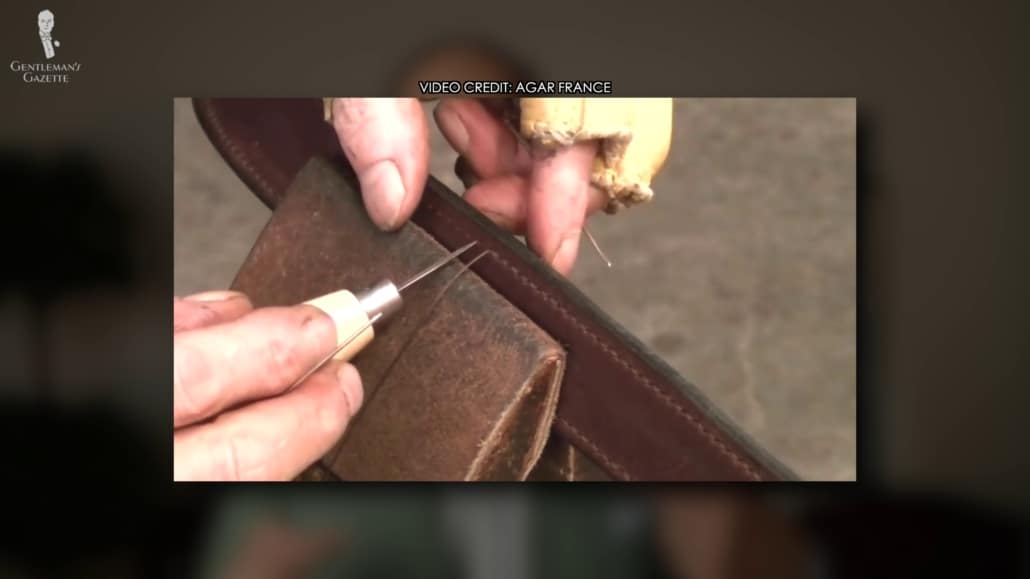
That being said, 99% of belts today are machine-stitched, and not hand-stitched. At the same time, with a price tag of $790 -$825 and up, you can definitely get a saddle-stitched, hand-welted belt. In general, the workmanship and the craftsmanship of Hermes products are all very neat; the holes are exactly in the center, and they’re spaced apart with the exact same distance. The edges of the belt are cut and then burnished, which is a process of using a hot iron and wax and rolling on it multiple times until the edge has a smooth finish that looks pleasant to the eye. This is the way most belts are finished.
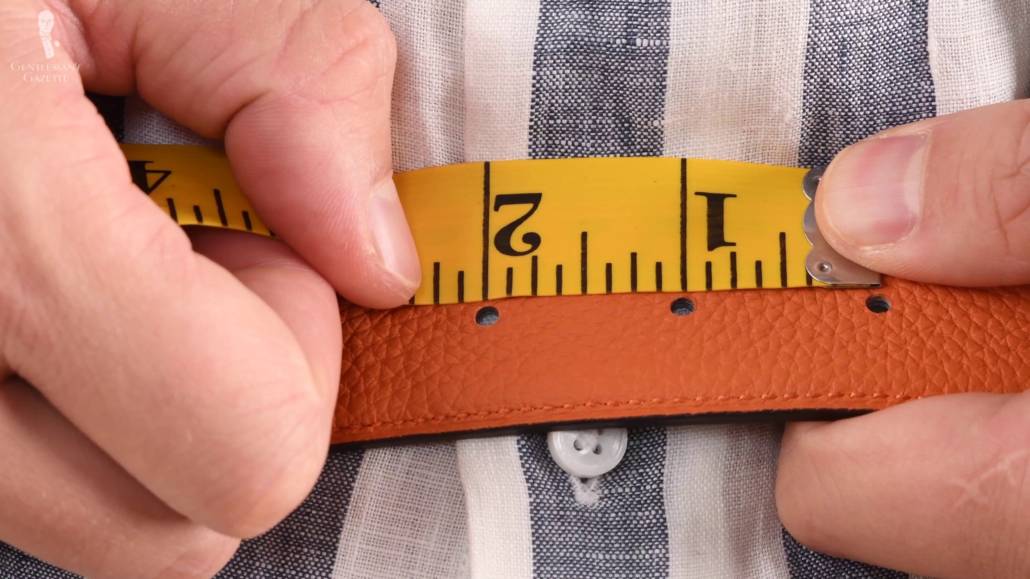
A Note on Skiving
A higher-end way to finish off edges is to start with a wider piece of leather and thin down the edges of the inside (also known as skiving), and then fold over the edges and sew everything together. That means the top and bottom edge of your belt actually has full outside leather and no cut edge that’s visible. In my opinion, that doesn’t just look nicer, but it is also a higher level of craftsmanship which takes more time, more materials, and is typically more expensive–and that’s the reason we do that with our Fort Belvedere belts.
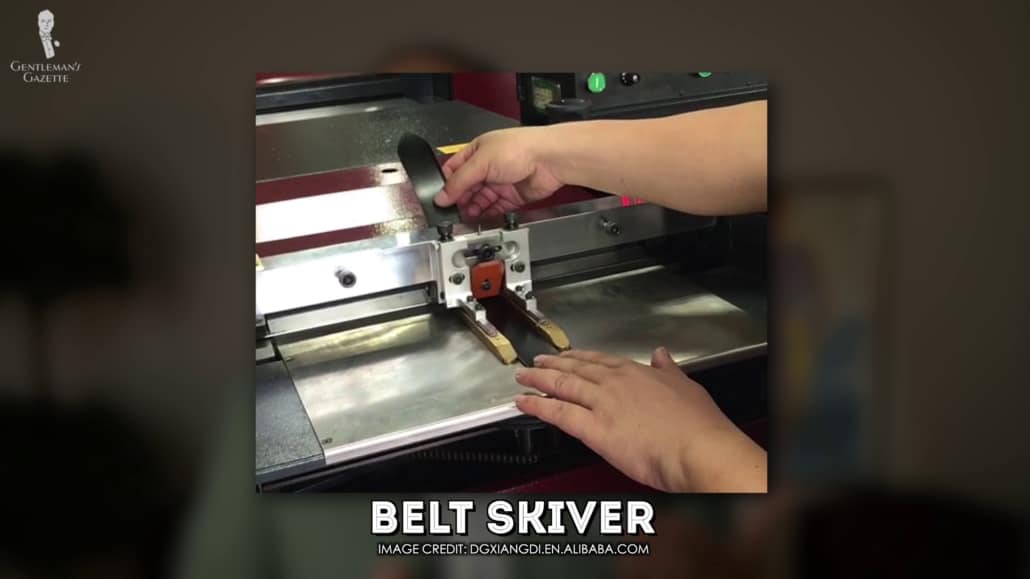
Unlike the paints and the wax used during burnishing, which may come off with a lot of movement over the course of a few years, the edges on our leather belts will always remain intact because they are in fact, leather and not just wax and paint.
Belt Sizing
In terms of sizing, each belt has one hole at one end and three at the other, so you can adjust your belt a little bit. Sometimes people also punch in extra holes, but bear in mind that people may think that it’s a fake if ever you try to sell it again. You can get the belts in 9 sizes (in 5cm increments), 80 centimeters to 120 centimeters. This covers waist sizes to 31” to 48”. As mentioned earlier, I chose the middle size but in fact, only the small size fits. When in doubt, I always size a number down. The way you’re supposed to measure is to take the distance around your waist where you wear the belt; if it says 100, then you would be a size 100 (or in my case, 95). Keep in mind that I’m already on the tightest adjustment hole, so I couldn’t make it any tighter.
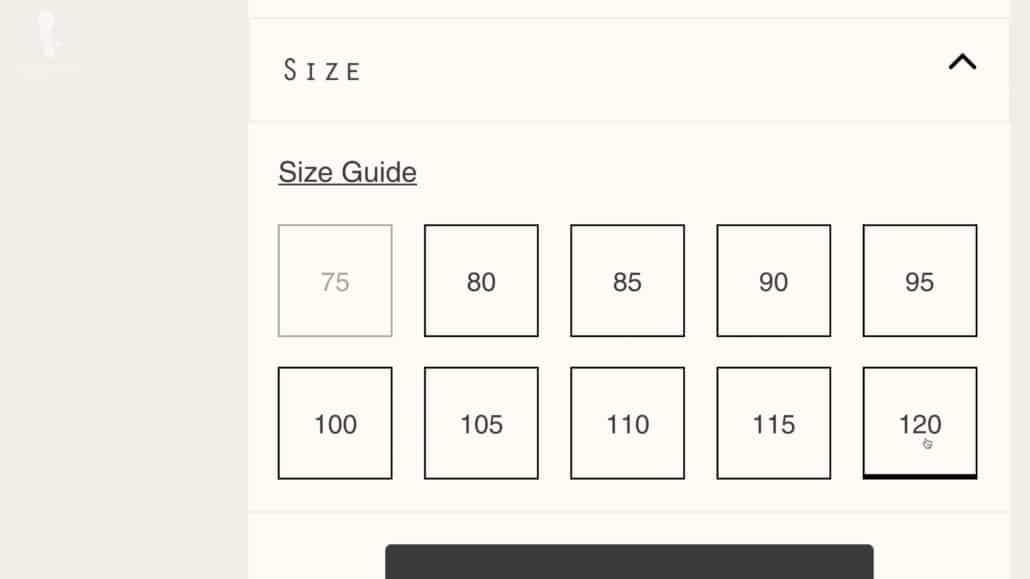
Belt Manufacturing & Packaging
Unlike with other manufacturers which often outsource production, Hermes produces all their leather goods in France, which is a relatively high-cost country. If they own manufacturing facilities, that keeps high manufacturing standards.
In terms of packaging, there’s no doubt that Hermes provides a premium experience. Their signature orange boxes have finely framed edges in dark brown–not black, because black is often what fake boxes will use. The logos are all neat, inside you have neatly folded white tissue paper without any Hermes logos, and you’ll find two little cotton bags, one for your buckle and one for your belt. Of course, the rectangular orange box arrives with the signature brown Hermes ribbon. As a gift, these make a beautiful statement long before you open the box.
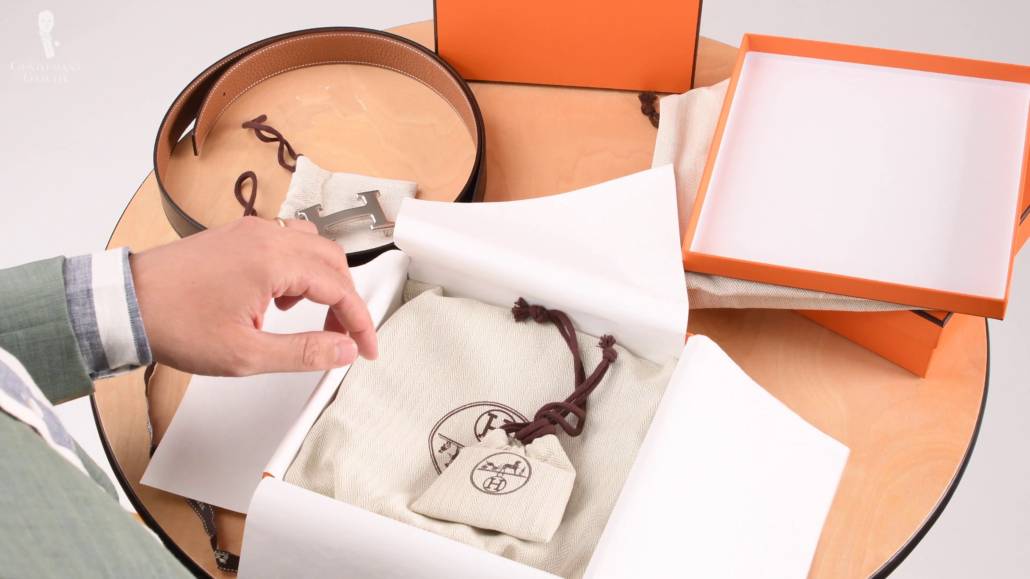
You noticed we’ve talked quite a bit about the leather; this is because we could judge its quality from the greater amount of information provided. Meanwhile, there really isn’t any information on their website about the buckles. Like I said, I think they’re brass, and they’re nicely made. There are no rough edges and they are beautifully polished. The version with a front that has a brushed look also has polished edges, and the backs of their buckles always have a sort of matte finish which is very consistent. This shows they have attention to detail.
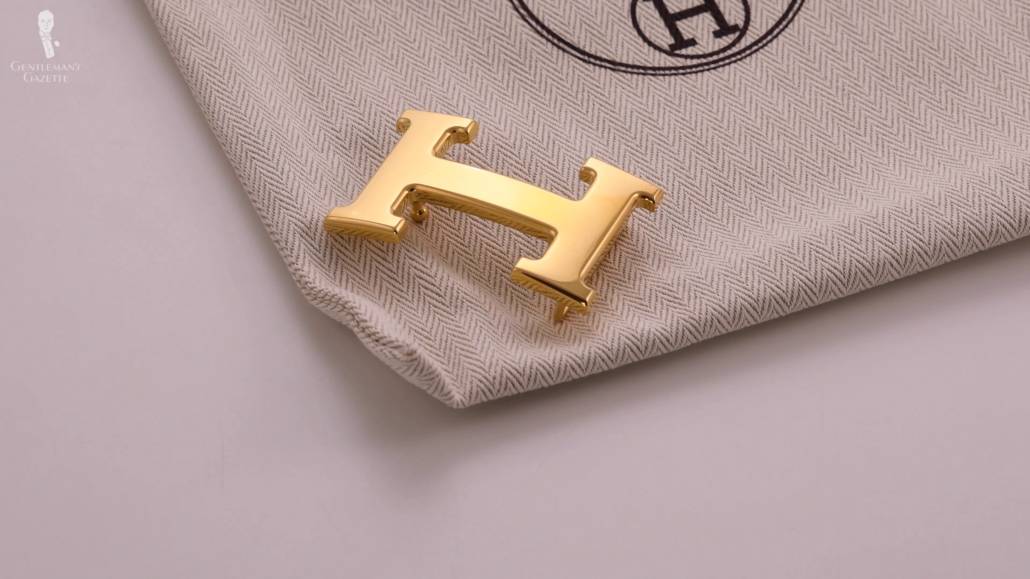
Hermès vs. Other Belt Systems
If we compare just the pricing, Hermes is always a lot more expensive. For example, from Duret Paris you can get a bespoke belt for $1,400, which is hand-stitched; you can have folded edges, you can have anything you want. The same belt at Hermes costs $4900. Of course, Duret is Duret and Hermes is Hermes, so if the status symbol is important to you, then a small manufacturer or a craftsman can’t give you that. That being said, the custom belt comes in one size, and while you may be able to make it reversible, it doesn’t have the whole system that Hermes offers you.
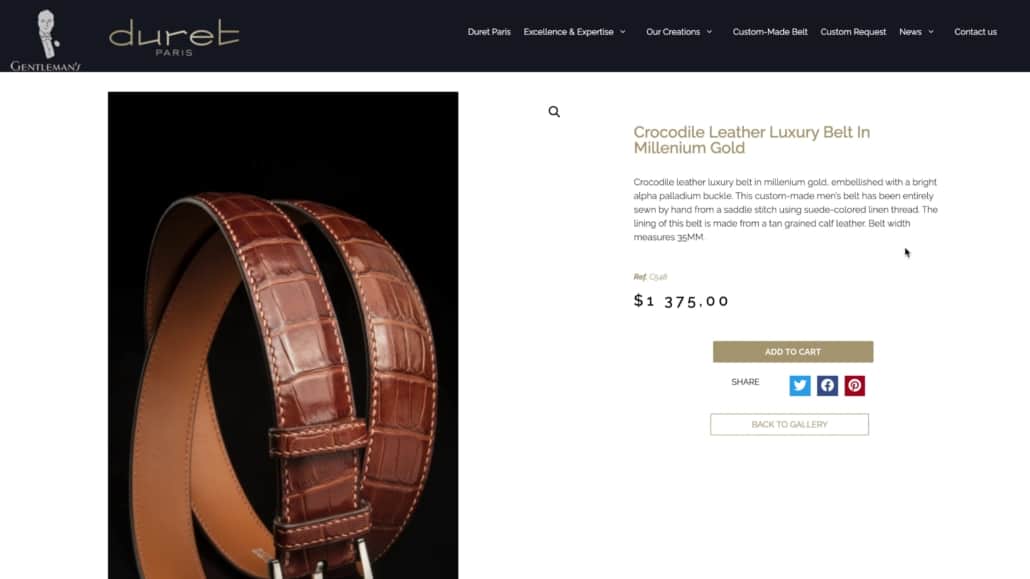
If you want to have more of an apples-to-apples comparison in terms of belt systems, maybe you could look at one from Fort Belvedere, or there’s also Montblanc; you can get high-quality calf belts, high-quality buckles that are interchangeable and sometimes reversible. The belts from Montblanc and Fort Belvedere are also stitched by machine. The Montblanc belts have a cut-and-burnished edge which is less expensive to produce, while the Fort Belvedere belts have a folded edge which is more expensive but also more beautiful and durable.
Obviously, you don’t get the H buckle with either the Montblanc or the Fort Belvedere belt system, but you get other classic buckles that are very attractive. I have no idea where Montblanc sources their leather, but it seems to be of high quality. At Fort Belvedere, we source our leather from the same tannery as Hermes does for their belts.
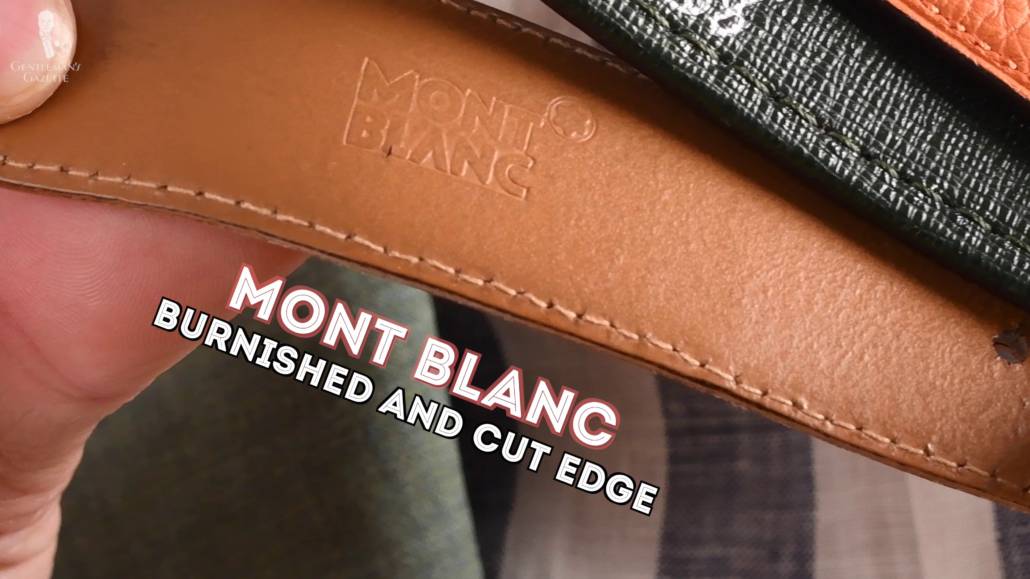
The three calf leather belts I bought from Hermes cost $2,440 which is about $813.33 per belt. At Fort Belvedere, if you buy one belt and one buckle together it costs $240; if you buy 3 of them their costs go down to $210 per belt with a buckle. That’s a huge price difference of 70%! If you take into consideration the volume discounts, it’s even a 75% discount for the Fort Belvedere system.
Yes, even at Fort Belvedere you get a nice gift packaging but obviously, Fort Belvedere doesn’t have the cachet of Hermes. At the Gentleman’s Gazette and Fort Belvedere, we’re all about high-quality products and a high level of craftsmanship. We’re not status symbols; we just make products for people who value good stuff and if that’s what you want, you’ll get a phenomenal price. If you want a status symbol from a famous brand, in very recognizable packaging, then Hermes is definitely the way to go–but be prepared to pay a lot of money for that.

Are Hermès Belts Overpriced?
In a word: yes, I think they are. But at the same time, when you buy their stuff, you end up with a quality product and not just garbage like with other brands (the sorry state of the Louis Vuitton duffel bags come to mind). If you look at it more from a numbers perspective: for $800 you can get a beautiful custom belt made with all the bells and whistles with high quality, but it’s not a modular system.
If you want to remain at roughly the same level of quality in terms of leather and workmanship and the flexibility of a modular belt system, then rationally, going with a Fort Belvedere belt will be a lot less expensive. Even a Montblanc system would be a lot less expensive even though it’s a lot more recognizable of a brand. Of course, some people just enjoy wearing quality products and they don’t wish to advertise any particular brand. This is why at Fort Belvedere, we don’t have logos in visible positions on our belts, because that would be tacky.
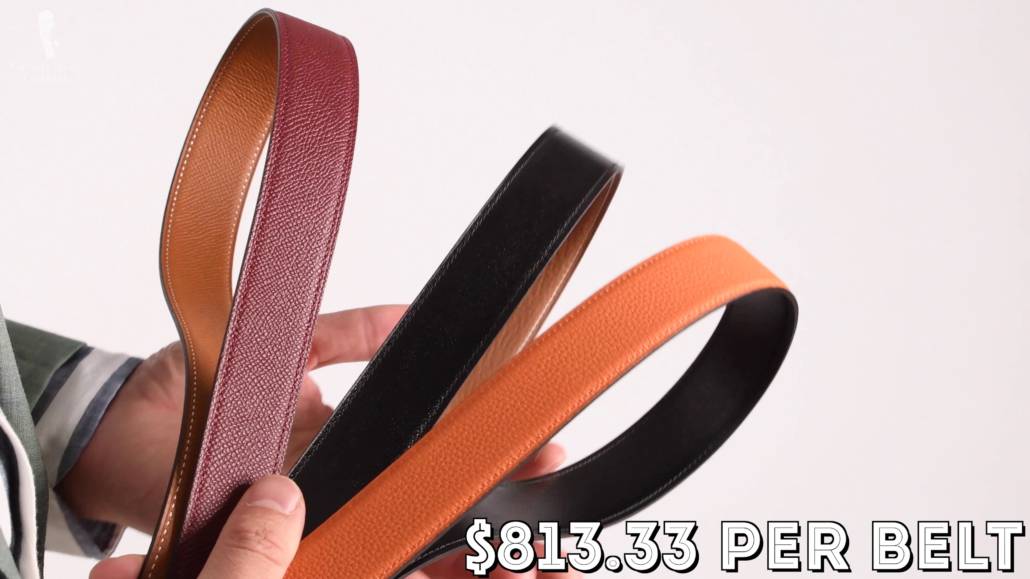
How Do Hermès “H” Buckles Make You Look?
When you wear a boldly colored belt with an H buckle from Hermes, you signal to others that you want to make a bold statement, that you are rich, and that you can afford to buy this thing which is the definition of a status symbol. The problem is, literally and figuratively, it makes you the center of attention in a kind of show-off way. So, even if you assemble an otherwise perfectly elegant or dapper-looking outfit, the belt will overshadow anything and it will just say, “I’m rich. I can afford this. I have the Hermes status. I am a VIP,” And that’s assuming people aren’t just thinking you as a douchebag or a show-off.
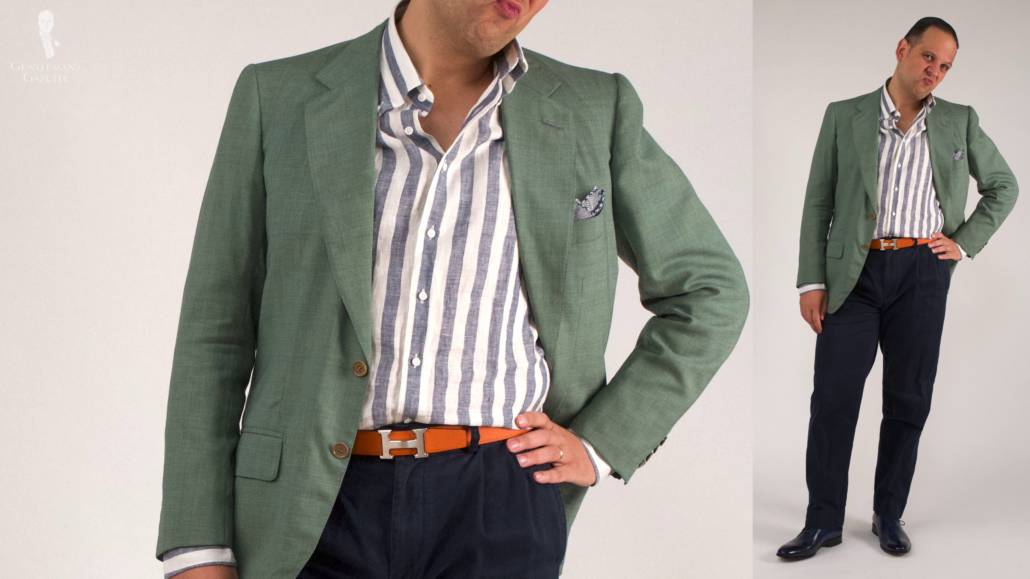
Also, they’re quite noticeable, flashy, and reflective, and they actually draw the other person’s look down towards the crotch area and away from your face. However, you obviously want people to look into your eyes and not down there. By the way, that’s also the same reason why you shouldn’t wear ties that are too long, because they have that same effect. Personally, an Hermes belt feels like a huge waste of personal style, I’d rather be recognized for my sense of style or my humor than the fact that I can afford expensive items. After all, I could find other items of the same quality for a lot less.
A Word on Counterfeit Hermès Belts
It’s technically not that difficult to fake a belt and buckle, even though Hermes does a great job of paying attention to detail. From afar, a fake $40 Hermes belt looks pretty much like the original, but some people may think of you as someone who wears fakes and is trying to impress them. Because of the high risk of fake products on the market, we recommend you only buy from an authorized Hermes dealer, or at least a dealer who specializes in those kinds of products and has a reputation to lose if they sell you something fake. Also, keep in mind that the belts and the buckles are separate, so you might wind up with an authentic buckle and a fake strap, or vice versa.
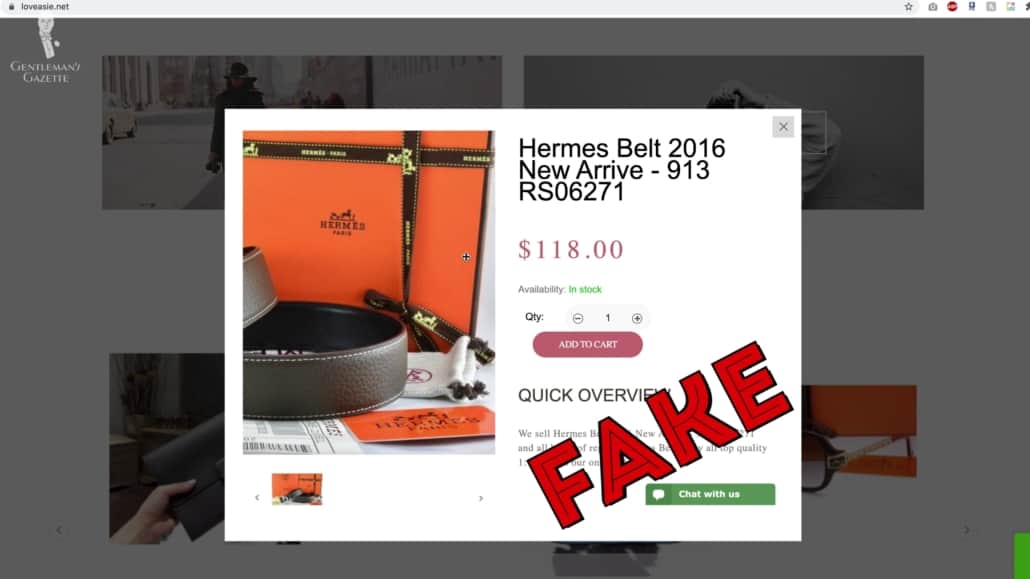
How Can You Spot A Fake Hermès Belt?
1. Leather
First of all, a genuine Hermes belt is always made out of two different leathers, with a color and a texture on the front side and the backside, and it is lined with a third leather which you can see when you look at the holes.
2. Stitch Work
Those leather pieces are neatly stitched together by machines, the stitches are at the ends, the stitch density is the same, and it doesn’t vary between the edges. They may have tone-in-tone or contrast stitching, sometimes varying between sides.
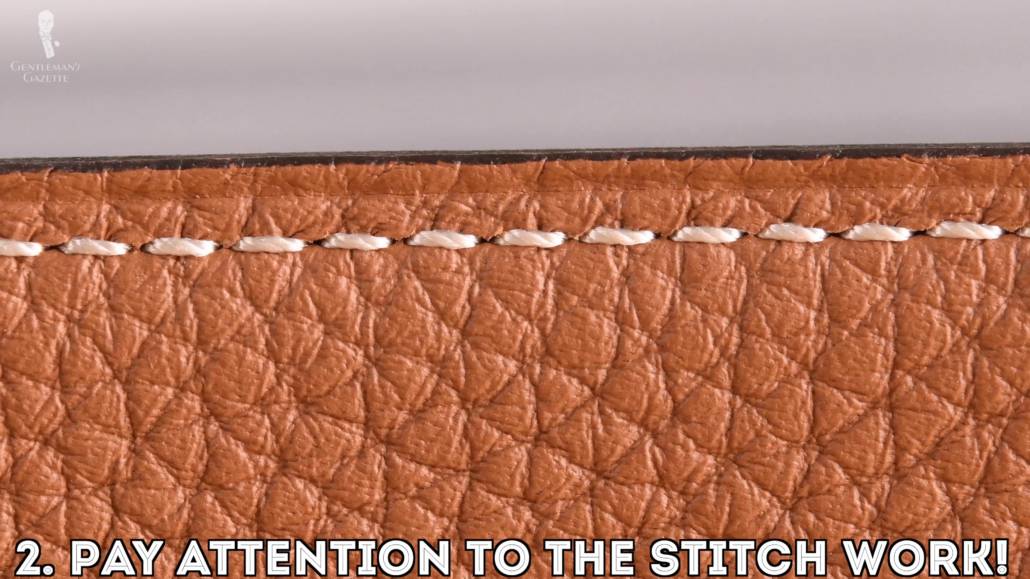
3. Texture
Hermes belts feature a nice distinct texture on their leathers; if that’s missing, if it’s just flat, it’s likely a fake. To learn more about different leathers and the textures that Hermes uses, check out their website or even better, go to their store.
4. Hole Measurements
As mentioned before you’ll have one hole on one side and three on the other, 5 centimeters (about two inches) apart. If there are more holes, whether they’re all the same or they’re slightly crooked, it’s definitely a fake.
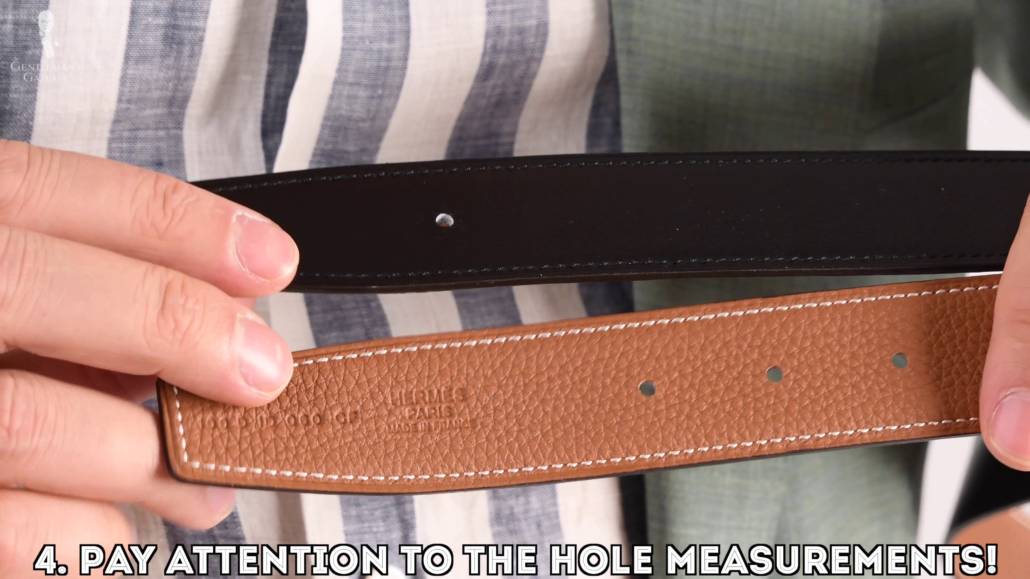
5. Buckle & Belt Details
While fake buckles may look exactly like the original, if you turn them around and look at the texture in the back, all Hermes buckles have a powder-coated, smooth, matte finish. It’s not brushed like stainless steel, but uniform and consistent. Also on the back of the buckle, you’ll find one loop and one pin that goes through both holes of the belt. On the backside of the buckle in the past, you’d find a little Hermes print, embossing, or sometimes a little symbol next to it. On the more modern buckles, you’ll find a -Hermes- sign laser-engraved very finely onto the buckle, as well as alphanumeric codes and Made in France in the back.
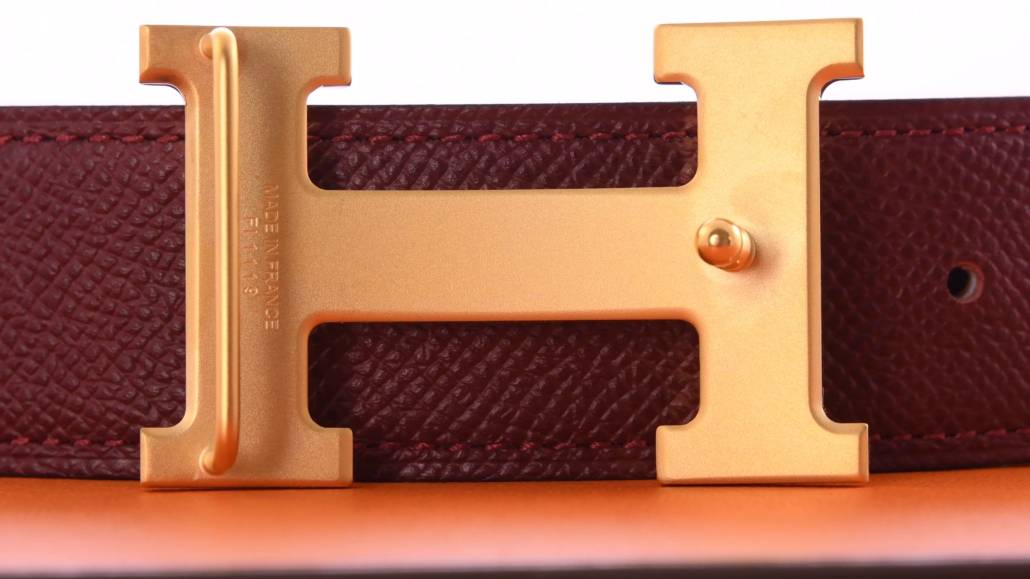
On the strap itself, on one end, you should find a neatly embossed HERMÈS on one line, then PARIS, then MADE IN FRANCE. You will also find the size embossed (in my case 105, 100, or 95), followed by a letter. C stands for manufacturing date or year. Newer belts also have an alphanumeric code that indicates what type of leather was used. For example, looking at these 3 belts, it seems like F denotes black leather. Fakes often get the font, size, or letter case wrong, so always look very closely at how it’s written. If it’s not neat, then chances are, it’s not from Hermes.
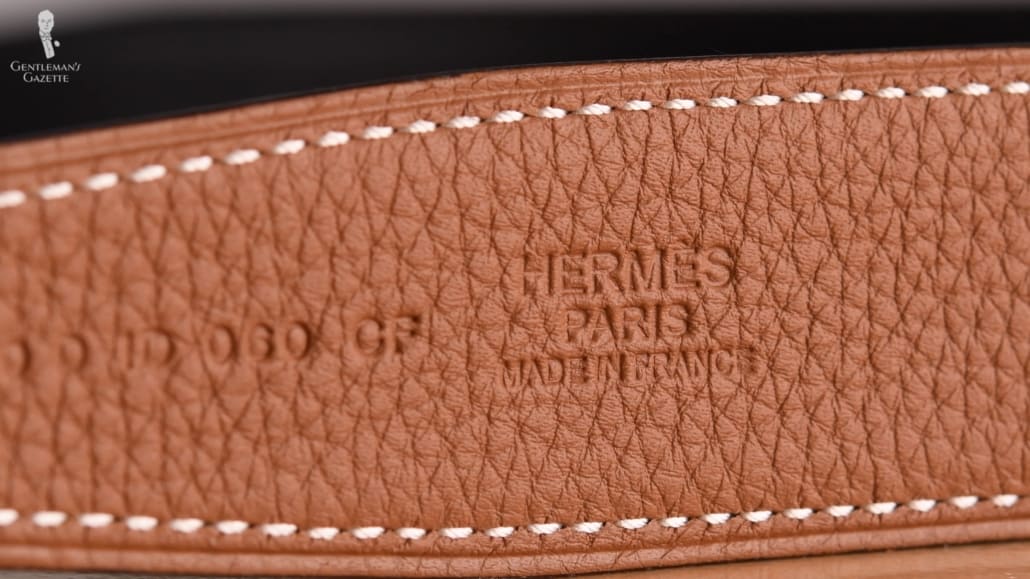
Conclusion: Is The Hermès “H” Belt Worth It?
I’d say yes, but only for a person who is interested in a status symbol that shows they can afford a very expensive product. You also have to be open to spending $800 on a belt, and the only good thing about that is you can sell them in a secondary market for relatively high prices if you can convince people that it is in fact, the real product. So, keep your receipt and that would make life a lot easier!
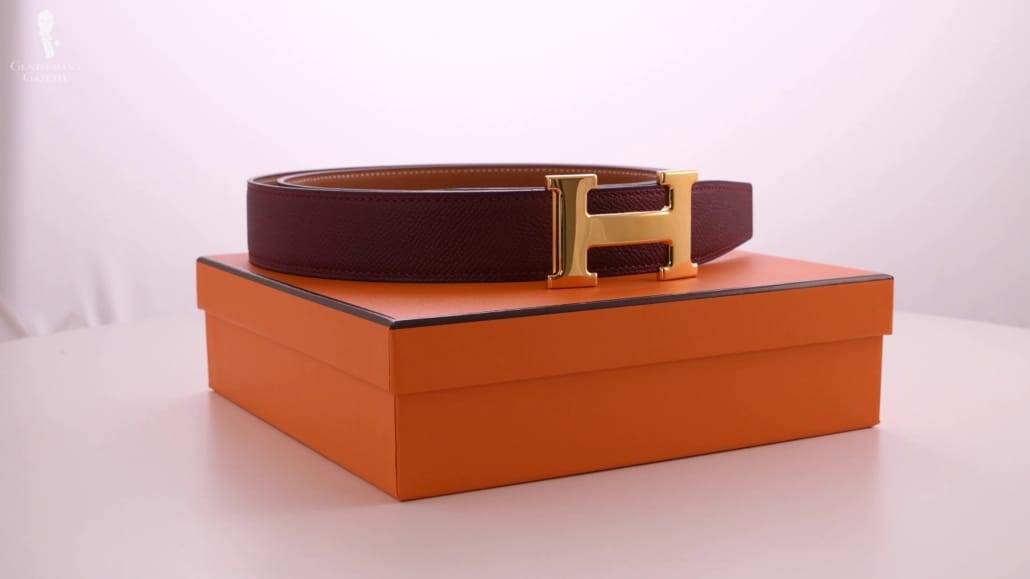
Again, if you’re interested in buying it, buy directly from Hermes–or if you care for a modular belt system of high-quality leather material, I offer you to take a look at our Fort Belvedere system. We’ll add more buckles and leathers on an ongoing basis, so eventually, you’ll have a truly robust system that might be comparable to what you get at Hermes. Of course, never with the same cachet, but on a workmanship level and quality level, you’ll definitely get something that is worth its money.
What’s your opinion of Hermès’ “H” belts? Would you wear them? Share with us in the comments!
Outfit Rundown
I’m wearing an outfit that I would expect to be worn by someone who likes an Hermes H belt. It consists of a louder green jacket. It’s paired with a relatively quiet navy blue chino but it’s paired with louder, more unusual blue shoes with a bright orange or an Hermes orange belt with a silver brushed buckle.I don’t have a single pair of orange shoes in my wardrobe and I don’t know who has, but nevertheless this is a popular belt for them and it just shows that people who have that kind of belt just wanna stand out.
In that same vein, I chose a shirt which is a linen shirt with a very bold stripe and I like it on it’s own but in combination with an orange belt, it’s just too much. This one in particular has a button down collar and mother of pearl buttons and came from Spier & Mackay.
The jacket is from A. Caraceni Milano, the pants are from Polo Ralph Lauren, the shoes are from Ace Marks, and the pocket square in blue as well as the shadow stripe socks are from Fort Belvedere and you can find them in our shop along with the belt system.
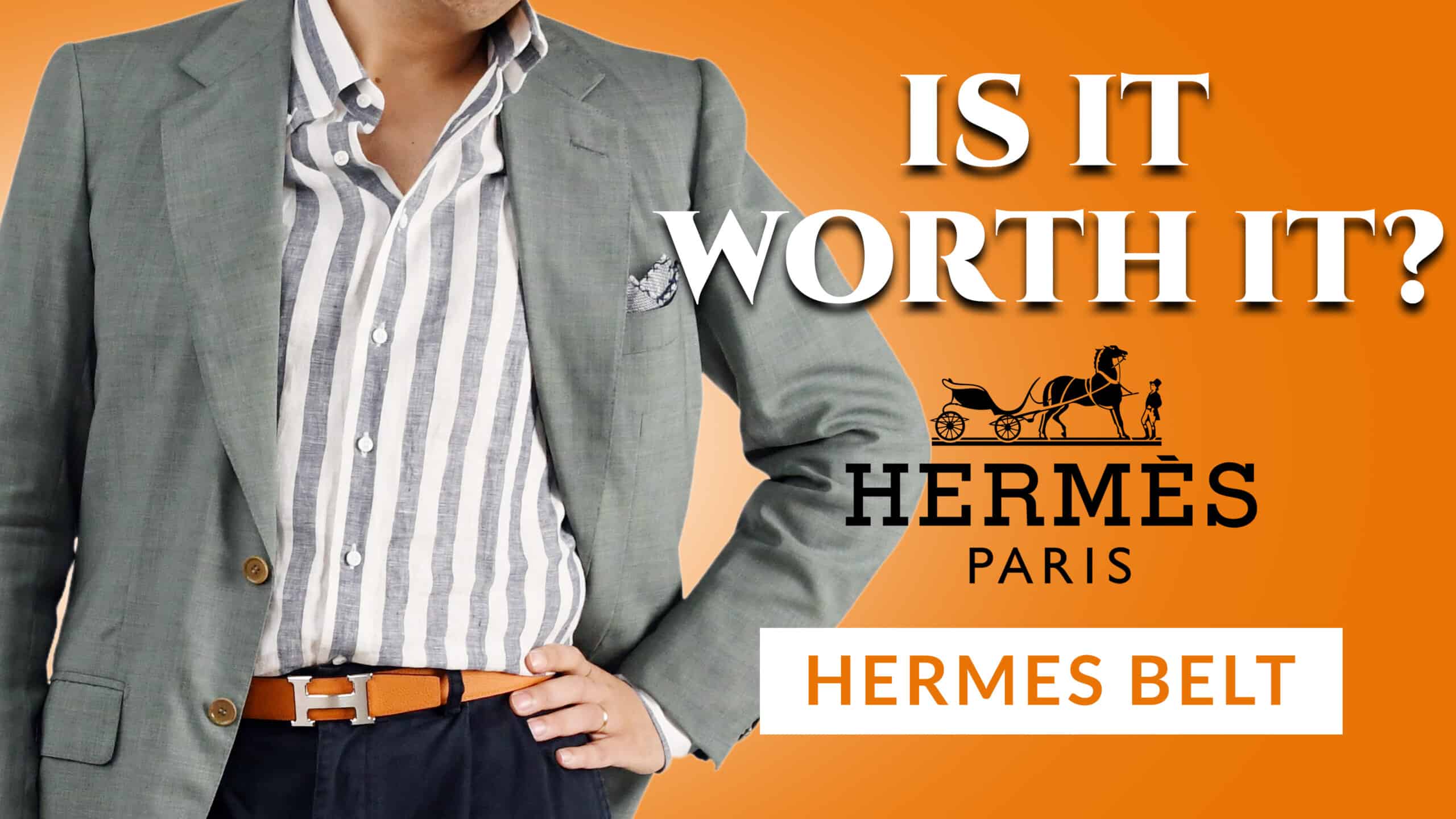


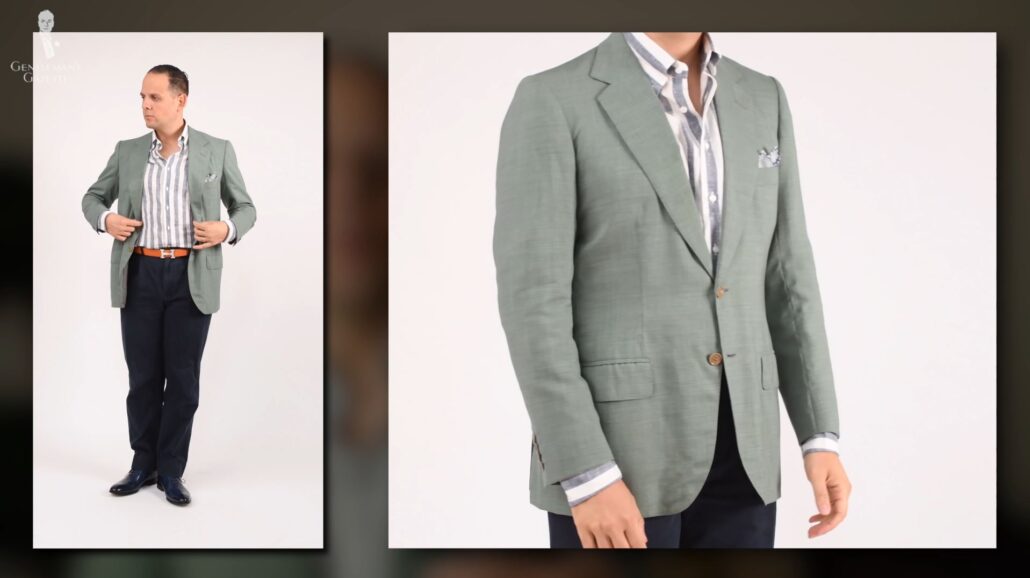
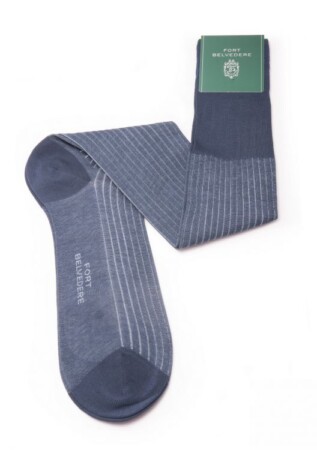
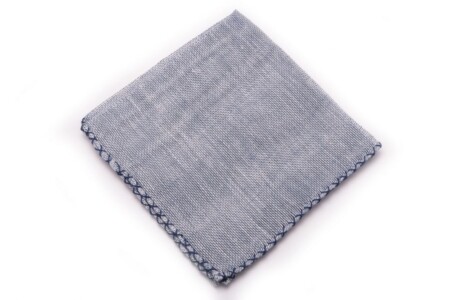
When sandwich boards were used for advertising, marketers had to pay people to wear them. When a manufacturer of high-fashion clothing makes a belt buckle in the shape of its initial, rich vulgarians will hand over huge sums of money for the privilege of being a walking advertisement. What a tacky accessory.
Dear Miles, I couldn’t agree with you more. I sometimes have to remove embroidered logs from my polo shirts or outer jackets.
John
Thank you, very clear and complete in content and opinion. I could not agree more.
I tend to buy my belts with my shoes, both Santoni. In my opinion their colors are great, leather quality is super and size is easily adjusted to match my exact size.
What do you think?
Yet another excellent article. Detailed and informative.
In my opinion, why would someone pay such a high premium to wear an “H” ?? ….(unless their name was Harry)
Good point, Mark!
My vote? Tacky and gauche, period. Who in their right mind wants a ginormous “H” emblazoned above his crotch? And I’ll continue to plead…please come up with a synonym for “that being said”; it gets tedious reading it, over and over. Otherwise, a great post. Vive le restraint!
not my thing personally, but people can spend their money how they like
I would rather wear a regular every day belt for under $100.00 and save the rest for a nice outfit and have people look at face and then actually take notice of my whole apearence than look at just my “gaudy buckle and belt, you can have the most expensive outfit, belt and buckle, but what comes out of your mouth will say more about you than how you look, but that is just me.
Have you lost some weight? Your face seems to show some weight loss. Good for you if you did.
Tackiest item on earth. Little point at all for this post except to sell Fort Belvedere.
Third world countries like the flash.
You’ll never find this stuff on old money.